Wildlife photographer Suzi Eszterhas first came across a pangolin while photographing African wild dogs hunting at night in Botswana. As Suzi puts it, “Anything wild dogs come by, they mess with, and they messed with this pangolin.”
But pangolins have a defence mechanism, rolling up into a ball to present an unappetising and impenetrable barrier of keratin scales to ward off hungry carnivores, like hedgehogs do with their spines. The dogs would have ripped the pangolin to shreds if they’d had the opportunity, but they soon lost interest.
Suzi didn’t, however, and she and her driver watched as the rather bizarre animal unfurled itself and trundled off into the night.
“One of the things my driver did before we lost it disturbed me at first – he put his hand on it,” she recalls. “I said, ‘What are you doing?’ He told me that in the local culture it is good luck to touch a pangolin. He did it very gently.”
This pangolin had been lucky. While rolling up into a ball has largely served these strange, scaly, ant-and-termite-loving mammals well since they evolved roughly 80 million years ago, there is one fatal flaw in their strategy: it enables humans to carry them off to a cooking pot as easily as gathering wood for the fire.
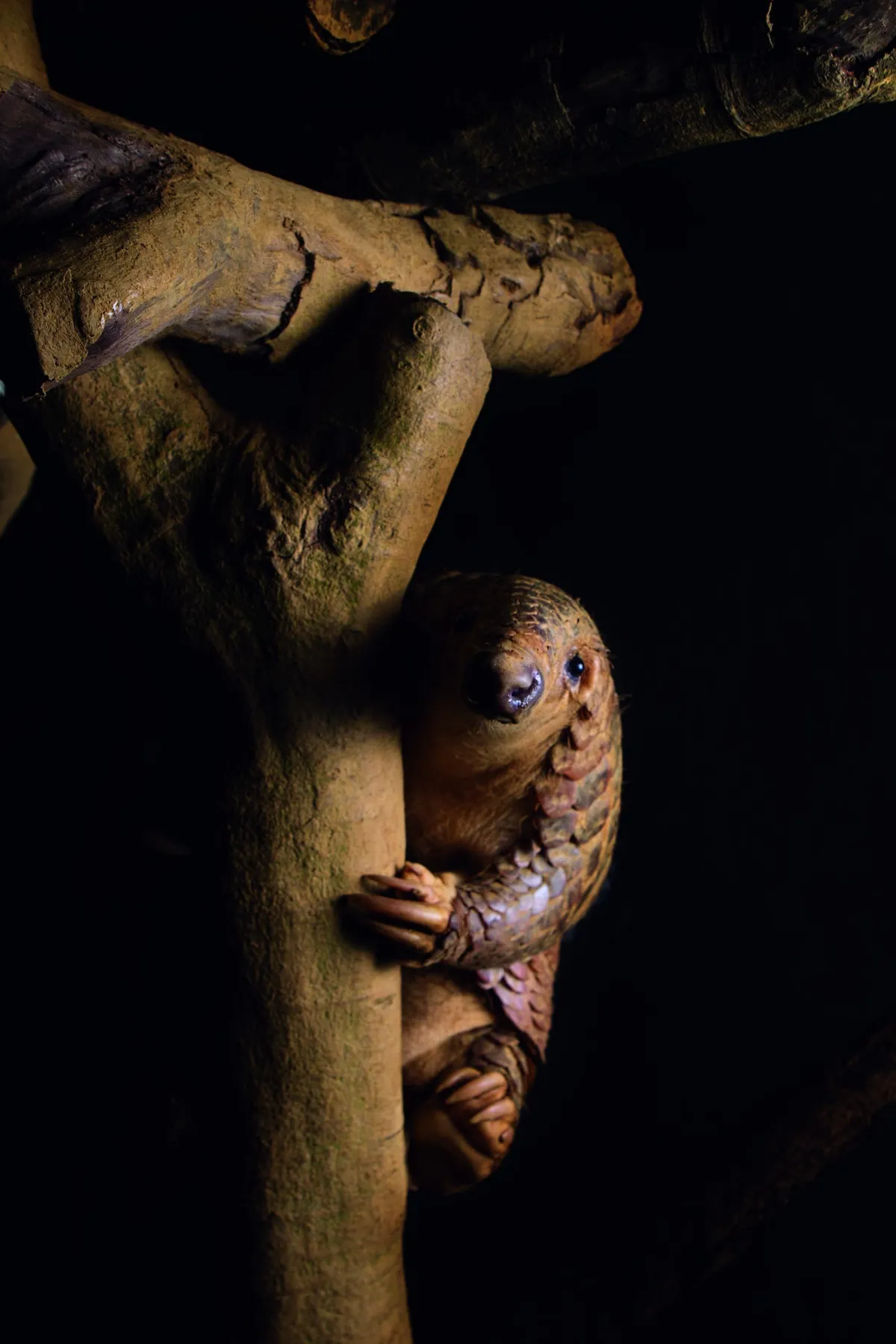
The deadly demand for pangolins
And not only for the pot. Despite the fact that they are made of keratin, the same substance as rhino horn and human hair, those scales – which have earned the pangolin unofficial sobriquets such as the ‘artichoke on legs’ and ‘walking pinecone’ – are highly sought after in many parts of both Africa and Asia for their purported benefits, which go beyond the merely medical to warding off evil spirits and conferring invisibility. It’s no wonder that the pangolin has been called “the most traded mammal on the planet”.
Suzi was lucky, too – most Africans and Asians don’t even know of the existence of the eight species of pangolin, and they rarely get to see one. It doesn’t help that all eight species are mainly nocturnal, cryptically coloured and extremely secretive; neither does the estimated removal of some one million animals from the wild over the past decade.
The eight species of pangolin
Africa:
- Black-bellied (also known as long-tailed pangolin), Phataginus tetradactyla: Vulnerable
- White-bellied (also known as African white-bellied, three-cusped, and tree pangolin), P. tricuspis: Endangered
- Giant ground pangolin (also known as giant pangolin), Smutsia gigantea: Endangered
- Temminck's (also known as cape, ground, and Steppe pangolin), S. temmnickii: Vulnerable (pictured)
Asia:
- Chinese, Manis pentadactyla: Critically Endangered
- Indian (also known as thick-tailed pangolin), M. crassicaudata: Endangered
- Philippine (also known as Palawan pangolin), M. culionensis: Critically Endangered
- Sunda (also known as Malayan pangolin), M. javanica: Critically Endangered
Discover more about pangolins in our guide to these unique mammals.
As Carly Waterman, the pangolin technical specialist at the Zoological Society of London (ZSL), points out: “It’s more individuals than the losses of elephants, tigers and rhinos combined.”
But while this unprecedented level of commercial activity, mainly involving trade to Asian countries such as China and Vietnam, has been taking place, the pangolin has been poorly served by the conservation community.
Indeed until 2012 it was the only mammalian taxonomic group that didn’t have its own specialist group under the auspices of the IUCN. In the words of Dan Challender, who researched the international trade in pangolins for his PhD, it had been “forgotten”.
Now, at last, conservationists are fighting back. The arrival of the Pangolin Specialist Group – thanks to Dan and ZSL’s Jonathan Baillie – has, in turn, led to the creation of three notable conservation projects in Cameroon, China and Thailand, all co-ordinated by ZSL.
“That’s half-a-million dollars that wouldn’t have gone to pangolins three years ago,” says Dan. The species’ cause has also been taken up by the Duke of Cambridge’s conservation programme United for Wildlife.
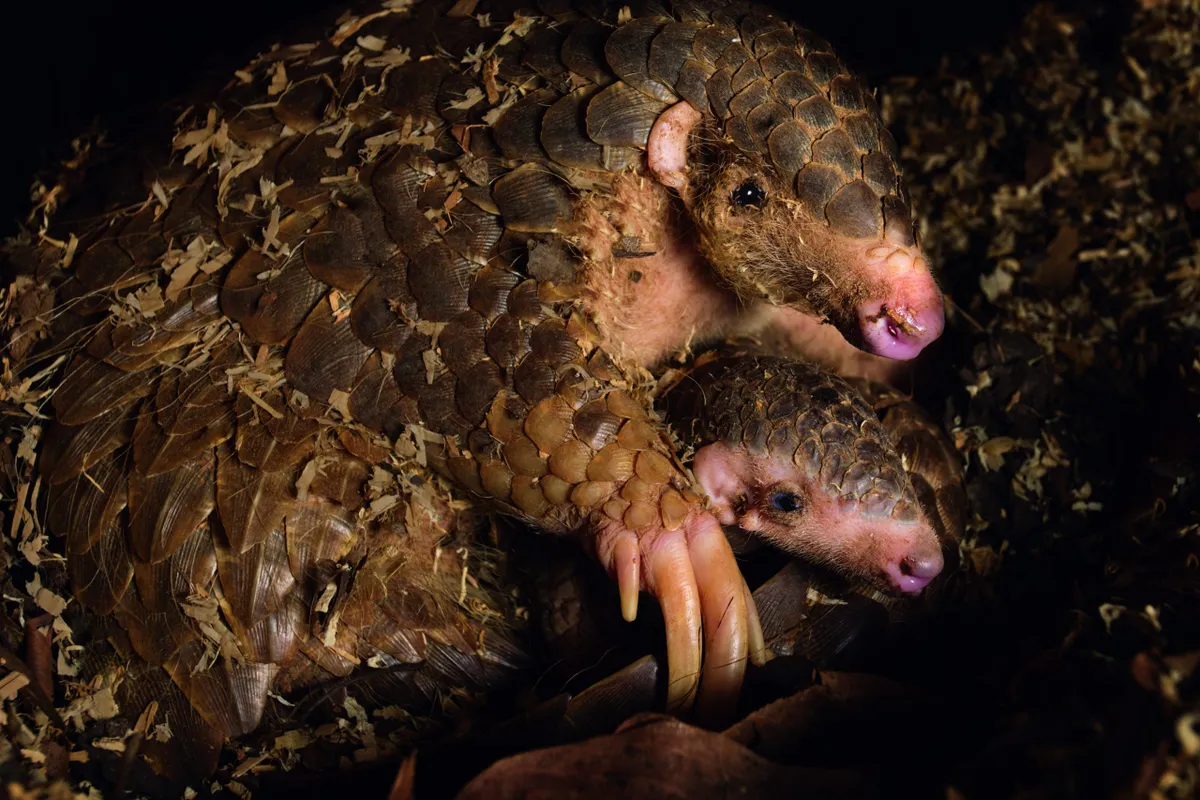
A Lucky find
But when you talk to anyone who’s anyone in the world of pangolins, one particular organisation crops up again and again – a small Vietnamese group called the Carnivore and Pangolin Conservation Program (CPCP), which specialises in caring for and releasing animals that have been confiscated from the illegal wildlife trade. Most of Suzi’s photos were taken there, and many are of ‘Lucky’ who arrived at the centre in December 2006 and has remained there ever since.
“We hope to release Lucky one day, but right now we want to keep him and make him an ambassador for all pangolins,” says the CPCP’s driving force Nguyen Van Thai. “He’s a very friendly pangolin, and we think that he can help raise awareness of the problems they face.”
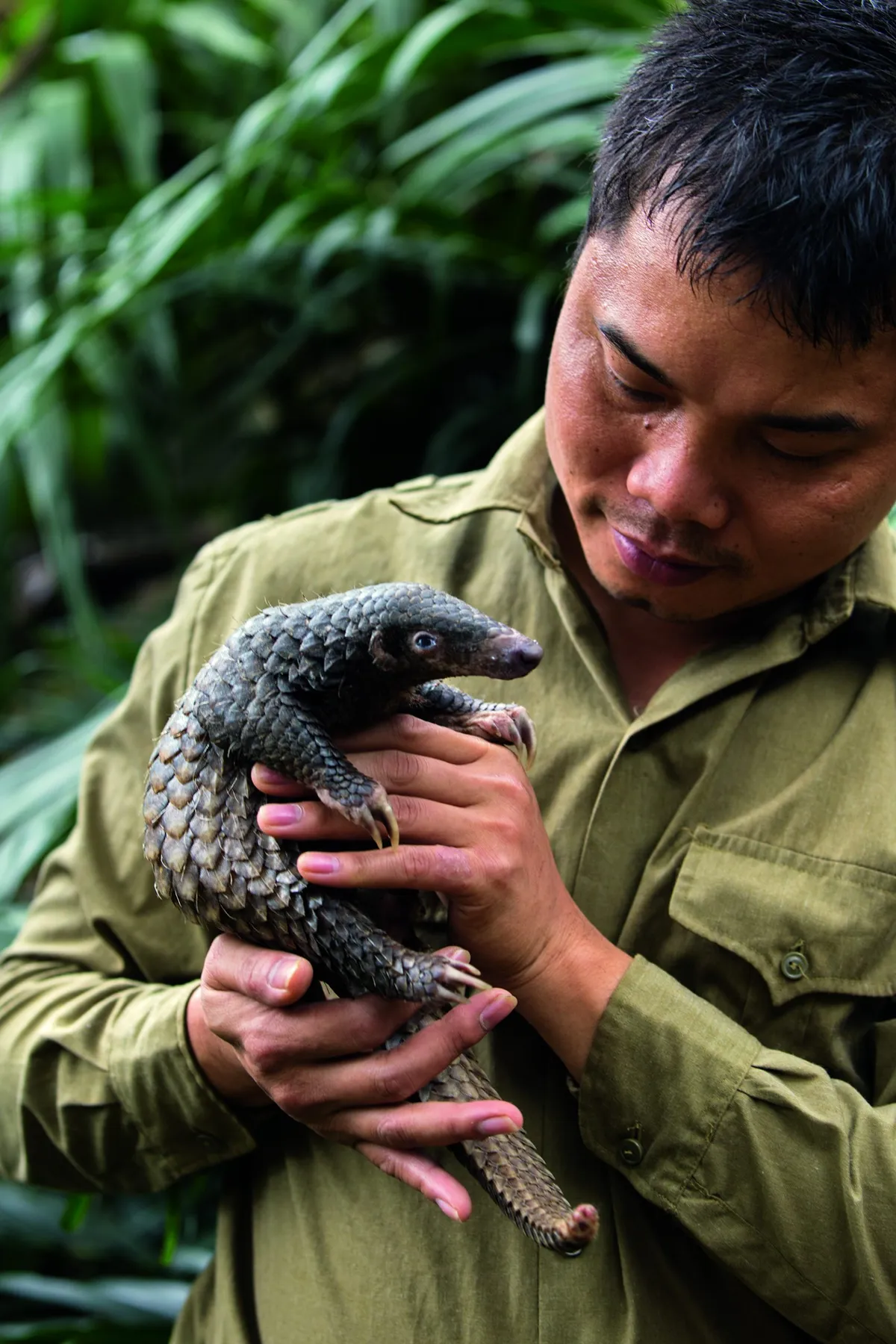
For the moment, Suzi points out, that’s a small price to pay. Thanks to the use of natural vegetation, the centre has some of the best enclosures for captive animals that she’s ever seen, and the staff regularly scour the surrounding forest to bring back ants’ nests so that the residents get to eat as natural a diet as possible.
“Lucky goes crazy over these ants,” she says. “He seems to have fun doing what he would in the wild, and not just eating something out of a bowl.”
Many of the pangolins – mainly Sunda pangolins Manis javanica –are rehabilitated into the wild, though officials frequently insist that confiscated animals are retained in captivity because they are evidence in criminal cases against wildlife traders.
However, Thai is trying to persuade the Vietnamese government to relax restrictions so that individuals can go back to the wild sooner rather than later.
According to Louise Fletcher, who co-ordinated releases for the CPCP from 2013 to 2014, the work is also important because it’s one of the few places where individuals are monitored using radio tags. This shows whether the animals are surviving post-release, and therefore whether the criteria used to assess the suitability of the habitat are valid.
During her time there, a total of five pangolins were released into Cát Tiên National Park, of which four are believed to have survived for more than six months.
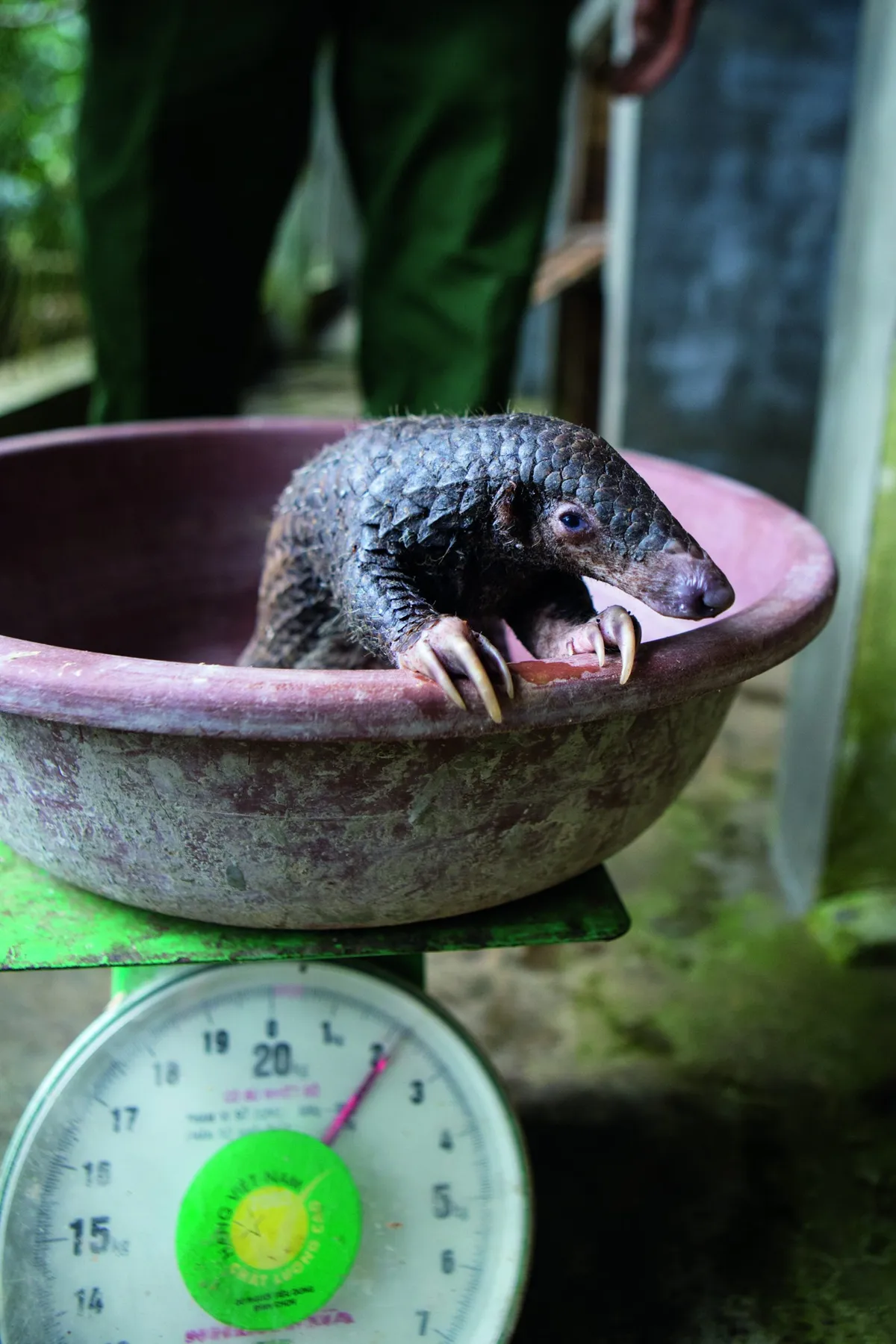
“The pangolin that didn’t survive kept returning to the same den site every night,” she says, “which is unusual. Normally pangolins wander all night in search of ants and termites, then find somewhere to sleep when they stop. This one had lost a lot of weight [when they found it after it died], and perhaps its behaviour should have alerted us to the fact that it wasn’t doing so well.”
But this, as she points out, is valuable information about an animal that is hard to study and whose basic biology is poorly understood. Since leaving Vietnam, Louise has worked with a small conservation project in Brunei, the tiny sovereign state on the island of Borneo, and is now raising funds to start a programme to train sniffer dogs that can find pangolins in the wild – which is after all how the poachers do it.
“Say you’ve got an area of forest that’s under threat,” Louise explains. “You could use the dogs to see whether there are pangolins and other species that might help to prevent that development from going ahead.” It would also enable you to tag wild animals to further increase our understanding of their behaviour.

Camera shy
Why not just use camera-traps, though, an efficient and relatively cheap technology that is trusted to monitor wildlife all over the world? “We had one Sunda pangolin, which was tagged, and it had seven den sites and an area of about 2ha that we were aware of,” Louise replies.
“We put up 10 camera-traps in this 2ha area, and it still took us three months to get a photo of it. Bigger mammals need to use pathways, but pangolins just wander through the undergrowth, and until we understand them and their use of micro-habitats better, we can’t place the cameras in the right locations.”
A greater understanding of the species’ behaviour will help scientists to plan suitable conservation strategies. But they also need a greater understanding of the human desire to exploit pangolins to the brink of extinction, and this is the issue that increasingly occupies Dan Challender’s time. Once, during a visit to Ho Chi Minh City in Vietnam, he heard that pangolin was appearing on a local menu, so he visited the restaurant.
“This guy brought a pangolin into the dining area in a corn sack,” Dan remembers. “It wasn’t big, probably about 2kg, and it was rolled up in a ball.” He killed the animal then and there before cooking and serving it to three diners, who paid £450 for the privilege.
Did Dan learn anything from witnessing such a gruesome sight? “I wanted to get an understanding of the demands and motivations of consumers, and perhaps use that to devise strategies to change their behaviour and stop them consuming pangolins,” he says. “The fact that the animal was killed in front of the customers suggests to me that the chef wanted to confirm the authenticity of the meat – that it came from a wild pangolin. Vietnamese people have a long cultural attachment to the meat of wild animals, which makes this a complex issue to address.”
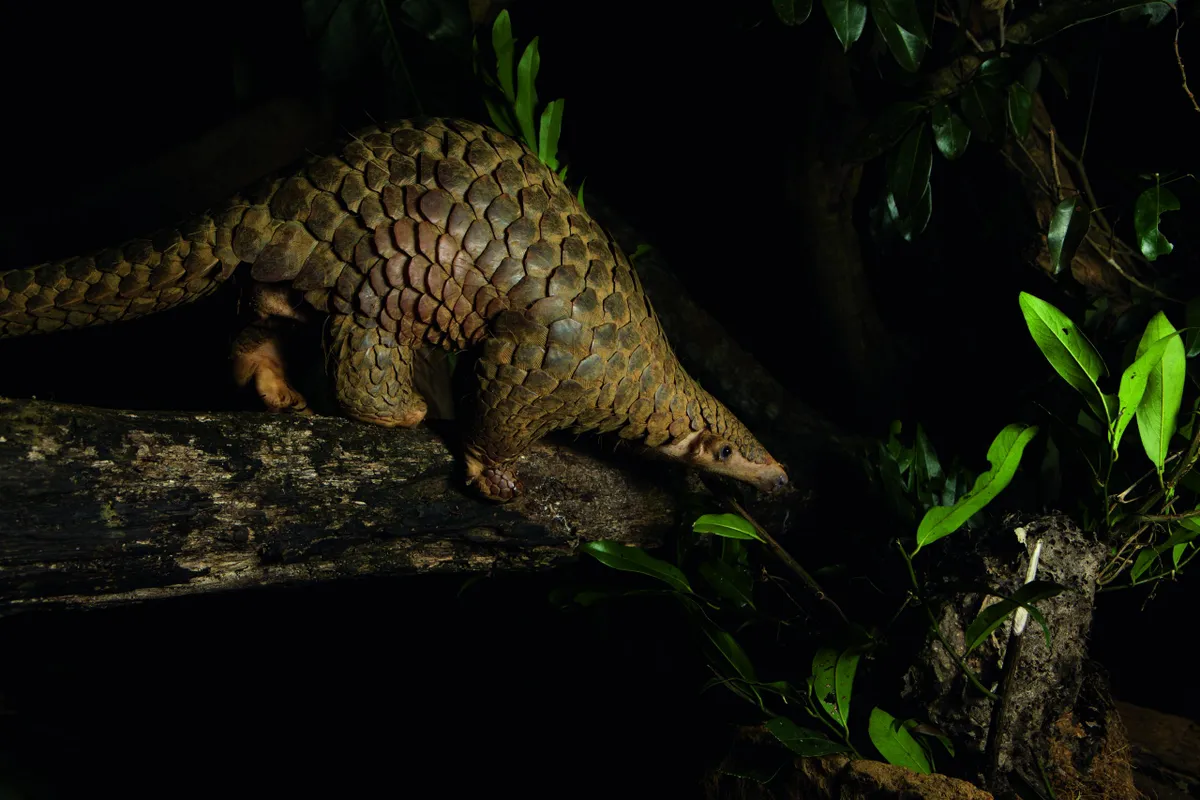
Pangolins and traditional Chinese medicine
Then there’s the pangolin’s dubious status as a walking medicine cabinet. This is, according to Carly Waterman, mainly an issue in China, and ZSL’s Chinese project is looking at some of the motives there.
As with rhino horn, there is no evidence that the scales have any impact on human health, but – as is also the case with rhino horn – the claims made on their behalf seem to become more outlandish by the year.
“Pangolin scales are already regarded as something that improves blood circulation, stimulates lactation and cures skin conditions,” Carly says.
“And recently one of my colleagues, who is Chinese, said that they were starting to be touted as a cure for breast cancer, which I hadn’t heard before. There’s no doubt that the threat has grown, and that’s probably down to the expanding middle classes with their increased spending power.”
Suzi Ezsterhas says that the world needs to care about pangolins, so that the people who live in the species’ range states begin to value them too. Perhaps they could start by appreciating their role as providers of ecosystem services: a single pangolin is estimated to eat 70 million ants and termites every year.
Failing that, what’s not to love about an animal that resembles the flowerhead of a cultivated thistle or – depending on your point of view – the reproductive organ of an evergreen tree, and possesses a tongue that starts at its pelvis and, at full extension, is longer than its head and tail combined?
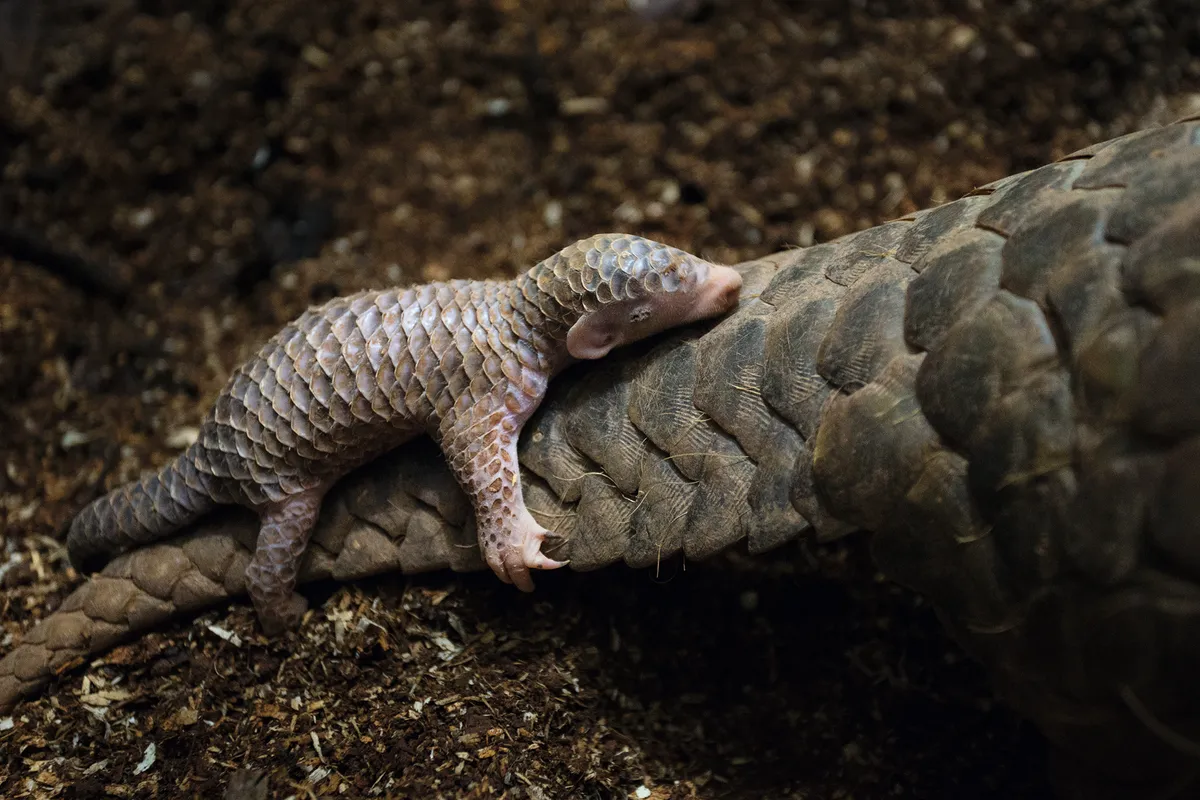
This article originally appeared in BBC Wildlife Magazine. Take a look inside the current issue and find out how to subscribe.
Main image: A young pangolin is held by a carer. © Suzi Eszterhas

